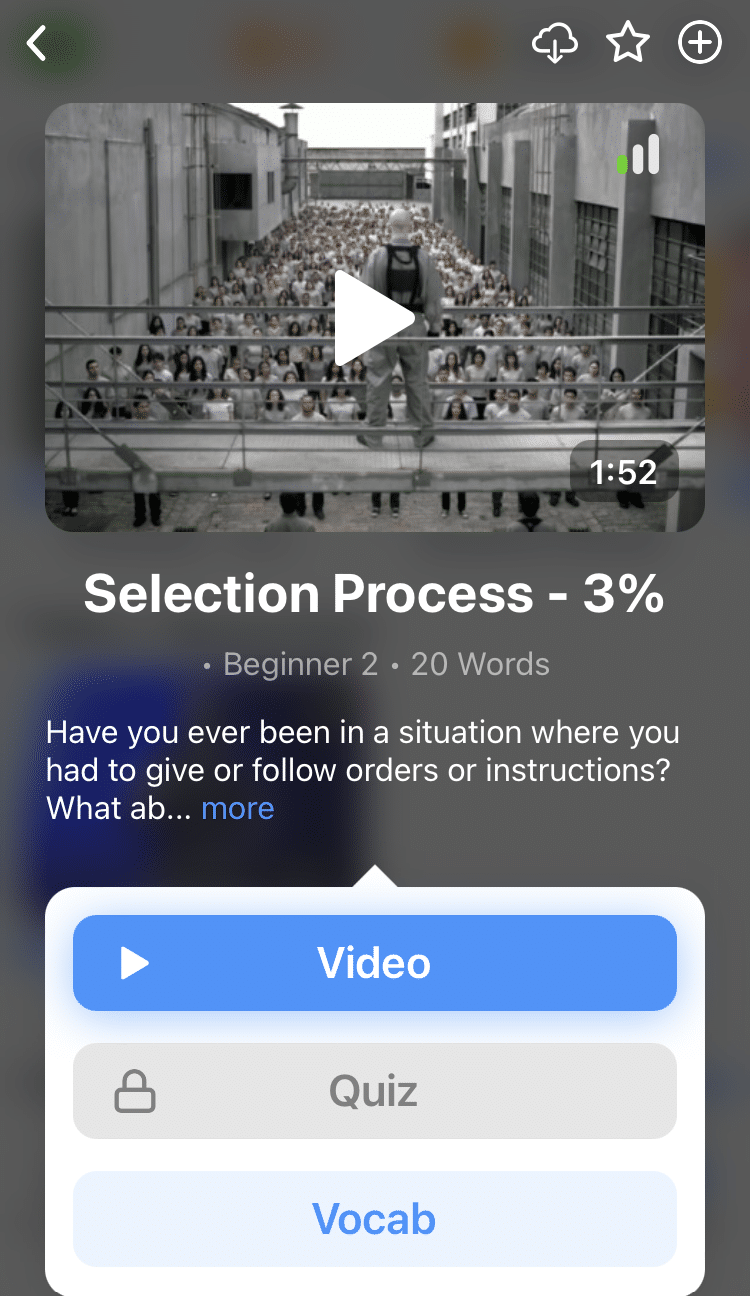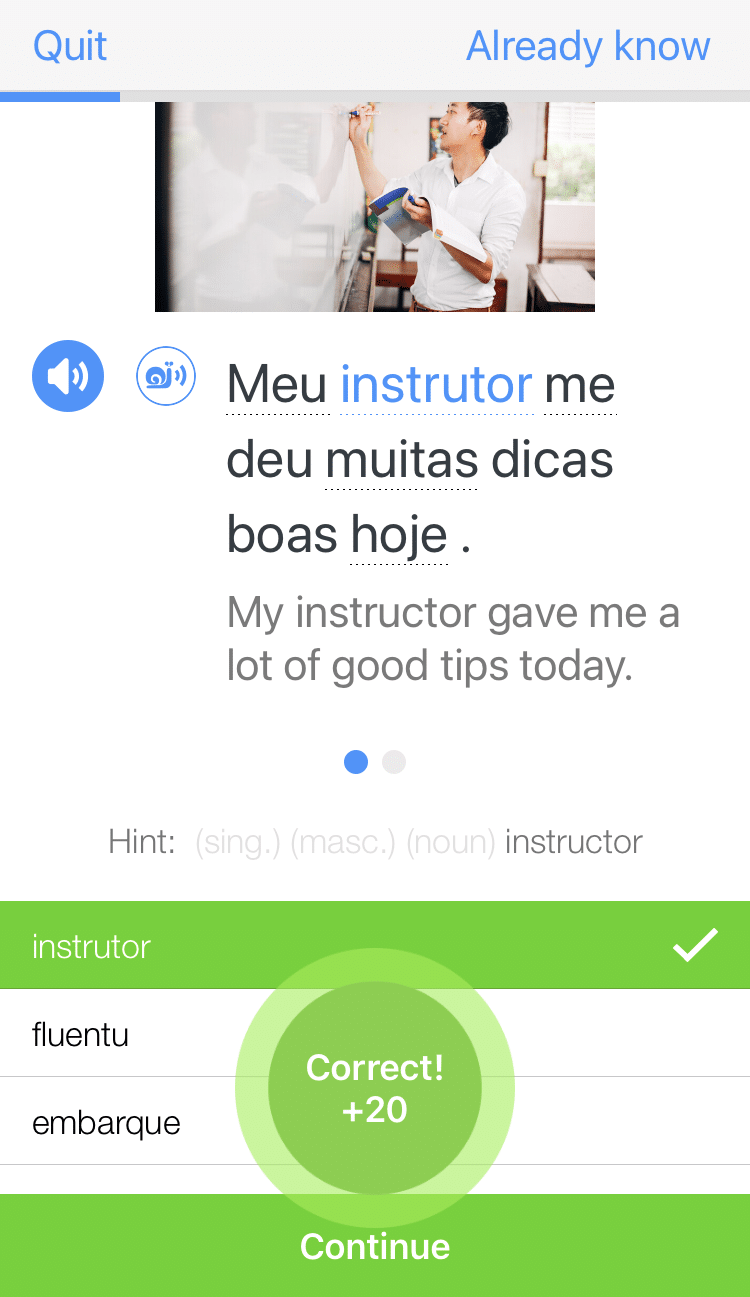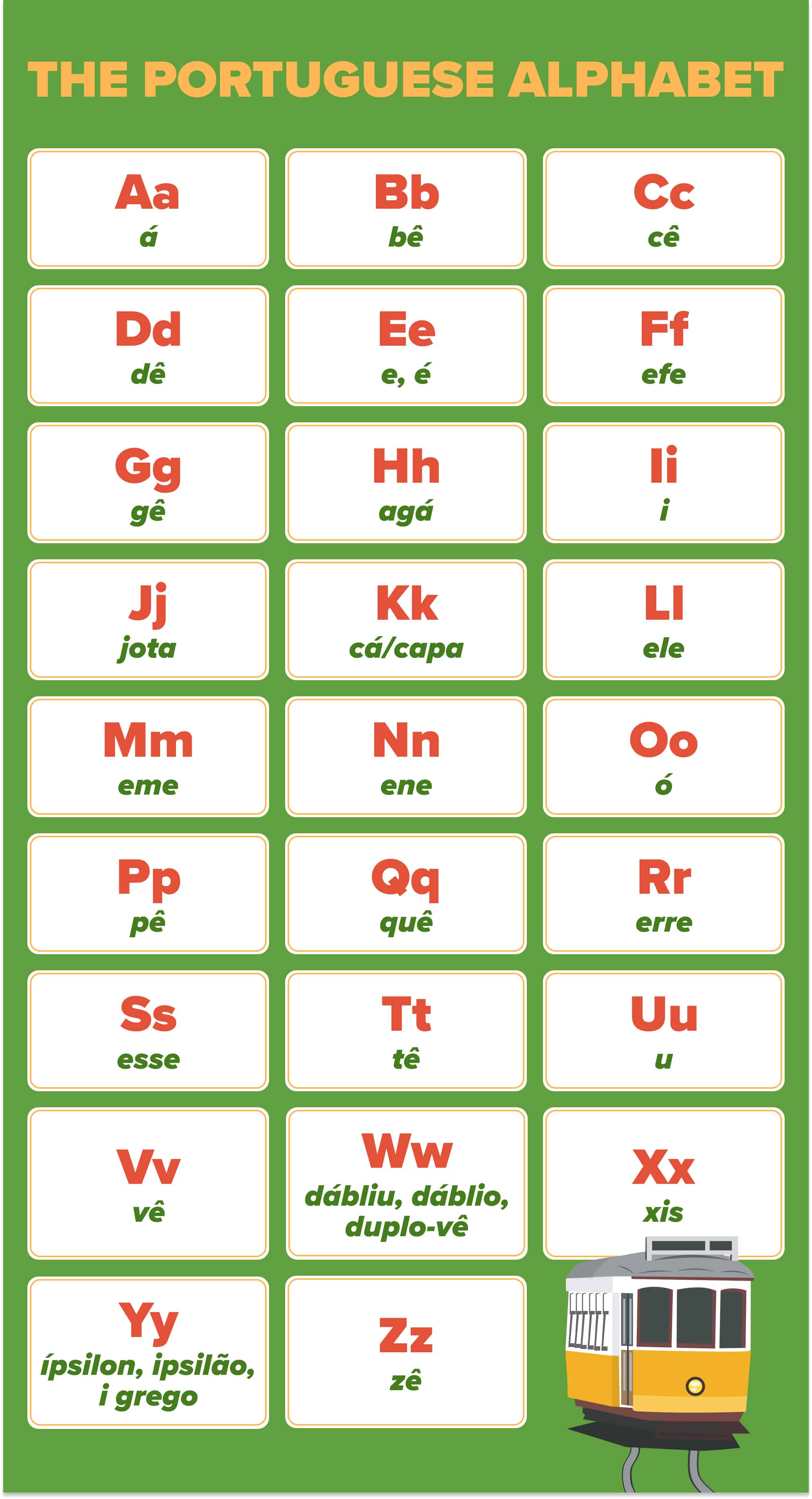
The Portuguese Alphabet (Audio Included)
When you first started studying Portuguese, you probably noticed a few key differences in the letters it uses. The Portuguese alphabet looks a lot like the Latin one, except for things like the extensive use of accent marks, the lack of the letters k, w and y (which, if used at all, are reserved for foreign words) and differences in pronunciation.
Of course, there’s more to the uniqueness of the Portuguese alphabet than that. We’ll use the International Phonetic Alphabet (IPA), which consists of symbols used worldwide to demonstrate different sounds.
Contents
- Overview of the Portuguese Alphabet
- European Portuguese Alphabet
- Brazilian Portuguese Alphabet
- Portuguese Diphthongs
- Portuguese Double Consonants
- Portuguese Accent Marks
- How to Learn and Practice the Portuguese Alphabet
- And One More Thing…
Download: This blog post is available as a convenient and portable PDF that you can take anywhere. Click here to get a copy. (Download)
Overview of the Portuguese Alphabet
Before we break things down, let’s take a look at the Portuguese alphabet in full:
You can get a better idea of how these letters sound by watching the following videos on the Brazilian Portuguese alphabet and the European Portuguese alphabet, respectively:
European Portuguese Alphabet
If you’ve chosen to learn European Portuguese, how you pronounce certain vowel and consonant sounds will vary from the Brazilian dialect.
So, to help with pronunciation, we’ll explain the different vowel and consonant sounds and rules you’ll need to know.
European Portuguese Vowels
Let’s start with the European Portuguese vowels:
| European Portuguese Vowels | Phonetics |
|---|---|
| a | [a/ɐ] |
| e | [é/ɛ/ɨ] |
| i | [i] |
| o | [o/ɔ] |
| u | [u] |
You’ll notice there are multiple sounds for a few of these. Essentially, some vowels are open, closed or muted, depending on the word being enunciated:
| Vowel Sound | Phonetics | Examples |
|---|---|---|
| Open A | a | arte (art) |
| Closed A | ɐ | antigo (old, ancient) |
| Open E | é | mulher (woman) |
| Closed E | ɛ | comer (to eat) |
| Muted E | ɨ | se (if) |
| I | i | imagem (image) |
| Open O | ɔ | sol (sun) |
| Closed O | o | coelho (rabbit) |
| U | u | música (music) |
European Portuguese Consonants
Now, let’s move on to European Portuguese consonants:
| European Portuguese Consonants | Phonetics |
|---|---|
| b | [b] |
| c | [s/k] |
| d | [d] |
| f | [f] |
| g | [g/Ʒ] |
| h | [silent] |
| j | [Ʒ] |
| k | [k] |
| l | [l] |
| m | [m] |
| n | [n] |
| p | [p] |
| q | [k] |
| r | [ʁ/r] |
| s | [s/ʃ/ʒ/z] |
| t | [t] |
| v | [v] |
| w | [w] |
| x | [ʃ/s/z/ks/gz] |
| y | [y] |
| z | [z, s] |
As you can see, some consonant sounds are fairly straightforward:
| Consonant | Phonetic Sound | Examples |
|---|---|---|
| B | b | banho (bath) |
| D | d | dente (tooth) |
| F | f | falso (false) |
| H | silent | hora (hour) |
| J | Ʒ | jogar (to play) |
| L | l | língua (tongue, language) |
| M | m | momento (moment) |
| N | n | número (number) |
| P | p | parte (part) |
| Q | q | quarto (room) |
| T | t | tigre (tiger) |
| V | v | vídeo (video) |
Others have more complex rules:
| Consonant | Phonetic Rules | Examples |
|---|---|---|
| C | k: when the C is followed by an A, O, U | casa (house) corpo (body) cuidado (care, caution) |
| s: when it follows E or I | centro (center) cintura (waist) | |
| G | g: when followed by A, O, U | gato (cat) gostaria (would like) guerra (war) |
| Ʒ: when followed by E or I | gente (people) ginástica (gymnastics) | |
| R | ʁ: at the beginning of a word | romance (romance) |
| r: in the middle of a word | caro (dear) | |
| S | ʃ: when the s follows an unvoiced consonant sound (c, ç, ch, f, p, q, s, t) or when there's a pause after a vowel | as suas amigas (your friends, feminine) |
| ʒ: when it is followed by a voiced consonant (b, d, g, j, l, lh, m, n, nh, r, rr, v, z) | desenhar (to draw) | |
| z: between vowels and when a word ending in “s” is followed by another with a vowel | fase (phase) às ordens (at one's service) | |
| s: at the beginning of a word | simples (simple) | |
| X | ʃ: at the beginning of a word; after a diphthong (e.g., ai, ão); after -me; after -en | xarope (syrup) caixa (box) mexer (to mix or stir) enxugar (to dry) |
| s, z, ks and gz: when x is in the middle of a word | s: máximo (maximum) | |
| z: exame (exam) | ||
| ks: maxilar (jaw) | ||
| gz: hexágono (hexagon) | ||
| Z | z: at the beginning or in the middle of a word | zebra (zebra) cozinha (kitchen) |
| s: at the end of a word | arroz (rice) |
Brazilian Portuguese Alphabet
It’s worth noting that some of the rules mentioned in the European Portuguese section apply to the Brazilian dialect, too. This will become clearer as we cover the main pronunciation cues you need to know.
Brazilian Portuguese Vowels
Here are the Brazilian Portuguese vowels and how they sound:
| Brazilian Portuguese Vowels | Phonetics |
|---|---|
| a | [a/ã] |
| e | [e/ɛ/i] |
| i | [i] |
| o | [o/ɔ/u] |
| u | [u] |
And here’s a breakdown of how each vowel sound is pronounced:
| Vowel Sound | Phonetics | Examples |
|---|---|---|
| Open A | a | agora (now) |
| Closed A | ã | pergaminho (parchment) |
| Open E | e | aquarela (watercolor) |
| Closed E | ɛ | chover (to rain) |
| Muted E | i | importante (important) |
| I | i | cinema (cinema) |
| Open O | ɔ | escola (school) |
| Closed O | o: in the middle of a word | conta (count, account, bill) |
| u: at the end of a word | correto (correct) | |
| U | u | único (single, unique) |
Brazilian Portuguese Consonants
For the most part, Brazilian Portuguese consonant pronunciation follows the same rules as European Portuguese.
The main differences are in the consonant sounds marked in bold below:
| Brazilian Portuguese Consonants | Phonetics |
|---|---|
| b | [b] |
| c | [s/k] |
| d | [d/ʤ] |
| f | [f] |
| g | [g/Ʒ] |
| h | [silent] |
| j | [Ʒ] |
| k | [k] |
| l | [l/ṷ] |
| m | [m] |
| n | [n] |
| p | [p] |
| q | [k] |
| r | [ʁ/r] |
| s | [s/ʃ/ʒ/z] |
| t | [t/ʧ] |
| v | [v] |
| w | [w/ṷ] |
| x | [ʃ/s/z/ks/gz] |
| y | [y] |
| z | [z, s] |
Here’s a look at what this entails:
| Consonant | Sound Rules | Examples |
|---|---|---|
| D | ʤ: before i or before an unstressed e at the end of a word | idioma (language) saúde (health) |
| d: everywhere else | querida (dear, feminine) dormir (to sleep) | |
| L | ṷ: after vowels | mel (honey) casal (couple) |
| l: everywhere else | lixo (garbage) loja (store) | |
| T | ʧ: before i or an unstressed e at the end of a word | tigre (tiger) forte (strong) |
| t: everywhere else | toalha (towel) antena (antenna) |
Portuguese Diphthongs
Also known as gliding vowels, diphthongs are a combination of two vowel sounds in a single syllable. There are two types of diphthongs in Portuguese: oral and nasal.
Oral Diphthongs
Oral diphthongs combine the sound of open vowels (like a, e, and o) with close vowels (like i or u):
| Oral Diphthongs | Phonetics | Examples |
|---|---|---|
| ai | [ai] | papai (father) vai (go) mais (plus or more) |
| ei | [ei] | cantei (I sang) eixo (axis) queijo (cheese) |
| éi | [ɛi] | papéis (papers) cartéis (cartels) fiéis (faithful, plural) |
| oi | [oi] | comboio (train) foi (was) moinho (windmill) |
| ói | [ɔi] | dói (hurts) lençóis (sheets) herói (hero) |
| ui | [ui] | fui (was, have been) diminui (decreases) uivar (to howl) |
| au | [au] | mau (bad) pau (stick, pole) autor (author) |
| eu | [eu] | meu (my, mine) choveu (it rained) europeu (European) |
| éu | [ɛu] | céu (sky) réu (defendant, accused) troféu (trophy) |
| ou | [ou] | ouriço (hedgehog) chamou (called) outro (other) |
| iu | [iu] | sumiu (disappeared) dormiu (slept) viu (he/she saw) |
Nasal Diphthongs
As their name suggests, nasal diphthongs are pronounced with a more nasal sound. You’ll know this is the case when you see a nasal vowel (like ã or õ) paired with an oral vowel (like e, i and o):
| Nasal Diphthongs | Phonetics | Examples |
|---|---|---|
| ãe, ãi | [ɐ̃j̃] | mãe (mom) cãimbra (cramp) pães (breads) |
| ão | [ɐ̃w̃] | mão (hand) chão (floor) portão (gate) |
| õe | [õj̃] | põe (puts, put — imperative) canções (songs) corações (hearts) |
Portuguese Double Consonants
When certain pairs of consonants come together, they also follow their own pronunciation rules:
| Double Consonants | Usual Location | Pronunciation | Examples |
|---|---|---|---|
| CH | Beginning or middle of a word | Like the English "sh" | chave (key) chocolate (chocolate) chamar (to call) |
| LH | Last syllable sound of some words | Similar to the "ll" sound in some Spanish dialects or the "gl" sound in Italian | toalha (towel) olho (eye) joelho (knee) |
| NH | Also used at the end/in the final syllable of a word Used for nouns, as well as for diminutive terms | Quite similar in sound to the Spanish ñ or a slightly more nasally version of the final syllable in the English word "canyon" | florzinha (little flower) casinha (little house) caminho (path) junho (June) tamanho (size) |
| CÇ | Final syllable | In this case, the first "c" has a hard "ck" sound while the "ç" has a soft "s" sound. Think of the word "conviction" in English and its Portuguese cognate, convicção. | confecção (confection) dissecção (dissection) fricção (friction) |
Portuguese Accent Marks
Once you’ve overcome the hurdle that is the Portuguese alphabet in both the European and Brazilian dialects, you’ll have to move on to accent marks next.
Here’s an overview of them:
| Portuguese Accent Mark | Letters That Use It | Examples |
|---|---|---|
| Caret (^) or Acento Circunflexo | â, ê, ô | pêlo (hair) pôr (to put) |
| Acute and Grave Marks (´, `) or Agudo e Grave | á, à, é, í, ó, ú | má (evil or mean female) épico (epic) |
| Tilde (~) or Til | ã, õ | cão (dog) canção (song) |
| Hook (¸) or Cedilha | ç | maçã (apple) canção (song) |
Because Portuguese accent marks deserve an entire article on their own, let me direct you to this post:
Portuguese Accent Marks: Rules and Pronunciation [with Audio and Examples] | FluentU Portuguese Blog
Portuguese accent marks are used to create a vast diversity of sounds. If you’re learning Portuguese, you’ll want to get familiar with all these little accents and the…
How to Learn and Practice the Portuguese Alphabet
Let’s go over some key strategies for learning and reviewing your Portuguese ABCs.
It’s a good idea to focus on the vowels first, not just because there are fewer letters to memorize, but also because their sounds will help you fine-tune your consonant pronunciation later on. Repeat the vowels to yourself several times, and make sure to mix things up a little. Recite them backward, jumble them up, say a single vowel three times before moving to the next—any exercise helps.
Once you feel confident with your vowels, add in the consonants. There are different ways you can do this:
- Memorize the consonants on their own, as you did with the vowels.
- Try your hand at reciting the alphabet in full.
- Break the alphabet into groups of four to five letters. This is a memorization technique called chunking, where information is sorted into smaller groups before being added into larger units. It’s meant to help you retain information quicker.
From there, you’ll want to start putting this knowledge into practice. At this stage, along with pronunciation, you’ll be homing in on spelling and vocabulary building. Here are some ways to get the ball rolling:
- Make a list of basic words like everyday phrases, travel essentials or even something as simple as food vocabulary. As you’re learning each word, spell it out loud to yourself in Portuguese.
- Make the most of all those amazing language learning resources you can find online.
- Browse through a dictionary or use a translator app like Linguee. Pick a few random words and try spelling them out loud. If your chosen app has an audio playback option, listen to each word a few times and practice saying it in full before spelling it out. That way, you’re getting a fuller pronunciation practice experience.
- Looking for something more interactive? Try a spelling game like 101 Languages’ Spelling Challenge or Digital Dialect’s Brazilian Portuguese Spelling Games.
Looking for more words to practice the Portuguese alphabet? Check out this video:
Don’t be overwhelmed by the amount of information here. There’s no need to rush when learning the alphabet and its pronunciation rules. Take your time, and break things down as much as you need.
All that hard work will pay off soon, as mastering the alphabet will allow you to start paving your path towards Portuguese fluency!
And One More Thing…
If you've made it this far that means you probably enjoy learning Portuguese with engaging material and will then love FluentU.
FluentU takes authentic videos—like music videos, movie trailers, news and inspiring talks—and turns them into personalized Portuguese lessons.
Other sites use scripted content. FluentU uses a natural approach that helps you ease into the Portuguese language and culture over time. You’ll learn Portuguese as it’s actually spoken by real people.
FluentU has a wide variety of videos, as you can see here:

FluentU brings native videos within reach with interactive transcripts. You can tap on any word to look it up instantly. Every definition has examples that have been written to help you understand how the word is used. If you see an interesting word you don’t know, you can add it to a vocab list.

Review a complete interactive transcript under the Dialogue tab, and find words and phrases listed under Vocab.

Learn all the vocabulary in any video with FluentU’s robust learning engine. Swipe left or right to see more examples of the word you’re on.

The best part is that FluentU keeps track of the vocabulary that you’re learning, and gives you extra practice with difficult words. It'll even remind you when it’s time to review what you’ve learned. Every learner has a truly personalized experience, even if they’re learning with the same video.
You can try FluentU for free for 2 weeks. Click here to check out the website or download the iOS app or Android app.



